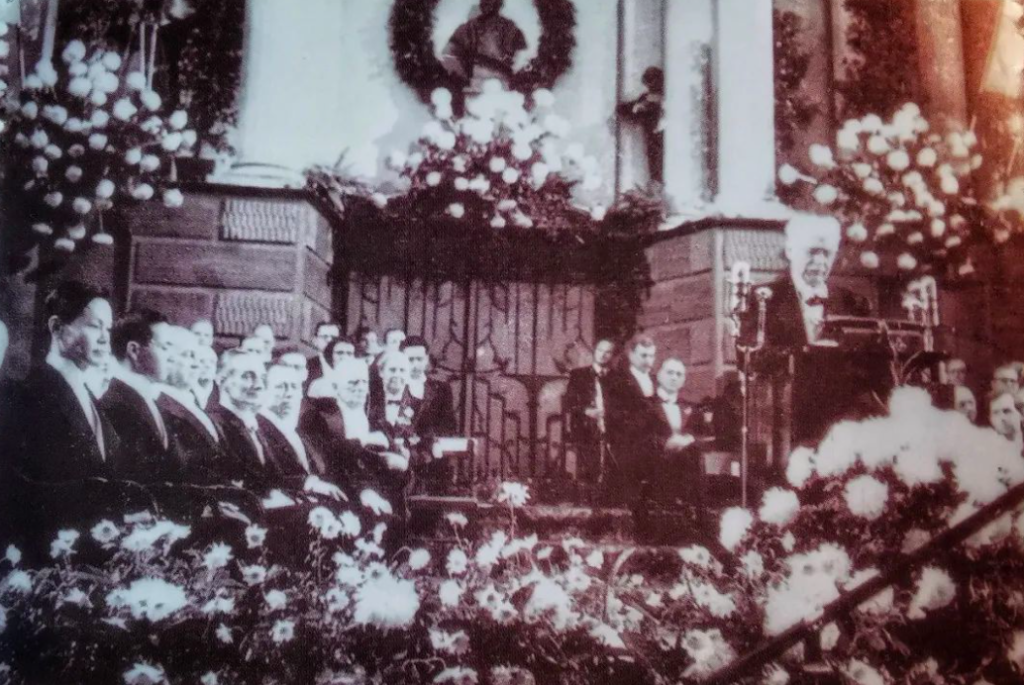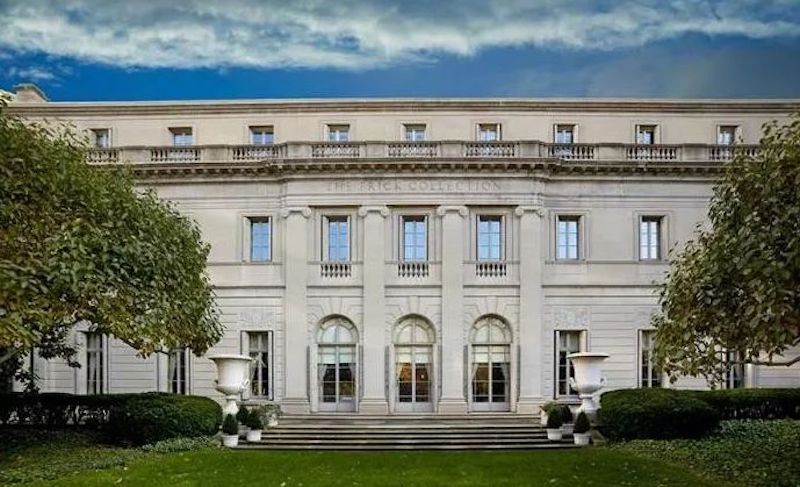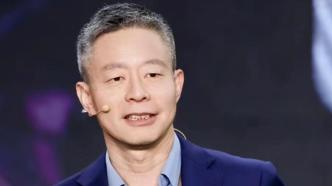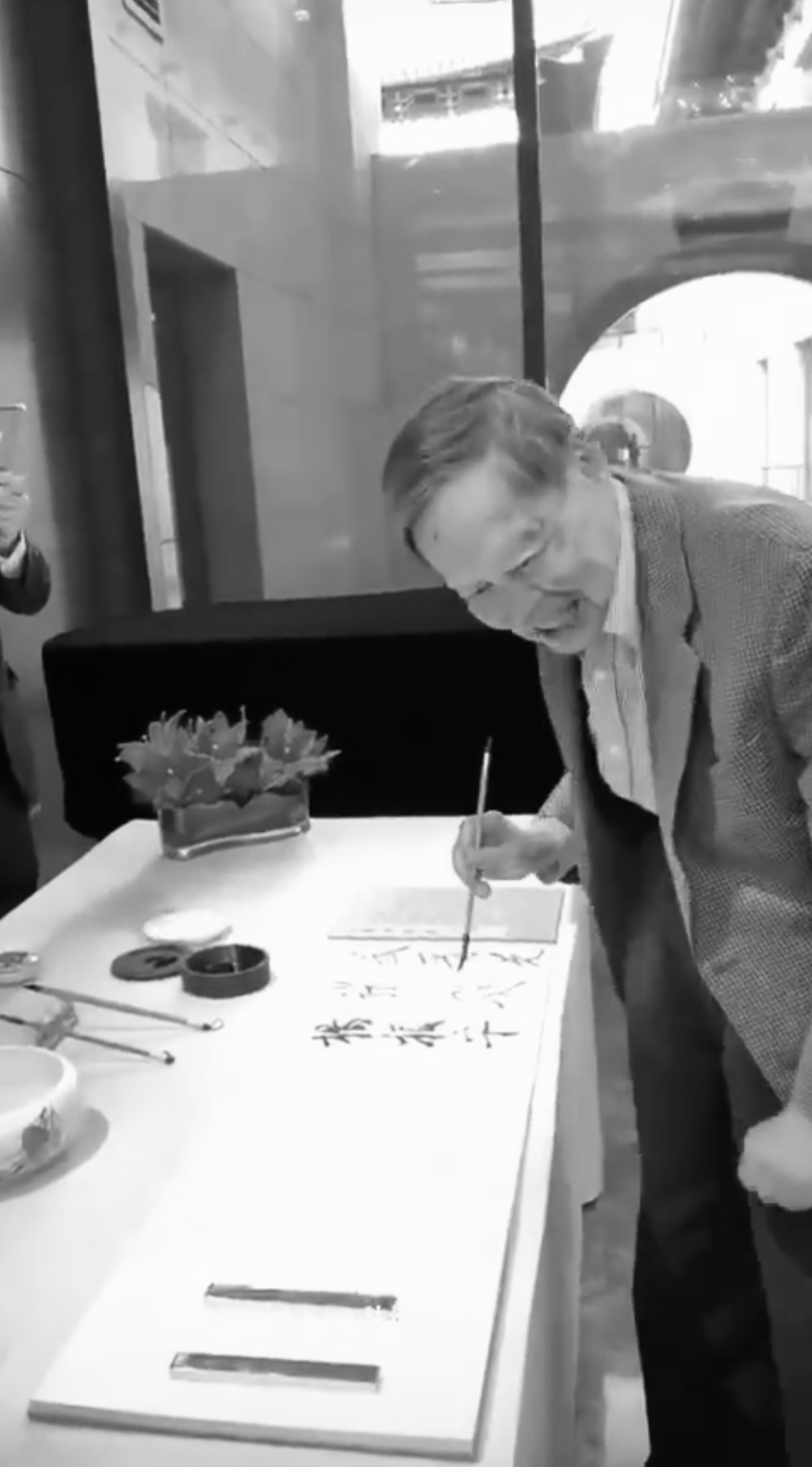
The public generally recognizes Yang Zhenning as a giant in the world of 20th-century physics. In reality, Yang also possessed a profoundly humanistic and artistic world—an appreciation for art, a cherished friendship, and the personal refinement that flowed from his writing. Science and art, like two sides of the same coin, together shaped a complete and rich scientist steeped in Chinese cultural heritage.

102-year-old Yang Zhenning signed his name
The humanistic background and artistic sentiment of the scientific giant
Yang Zhenning's artistic cultivation is deeply rooted in traditional Chinese scholar culture. He was born into a family of scholars. His father, Yang Wuzhi, was a renowned mathematician, but he also valued the influence of traditional culture in his children. This family tradition laid a solid foundation in Chinese studies and fostered a lifelong love and profound understanding of classical Chinese culture. In him, we can see an almost classical ideal of the "generalist"—the pursuit of a comprehensive understanding of knowledge rather than narrow specialization. He believed that science is the exploration of the mysteries of nature, and art is the expression of human emotion. At the highest level, the two are interconnected and mutually reinforcing, jointly constituting an exploration of the meaning of the universe and life.
This fusion of perspectives ensures that Yang Zhenning's artistic cultivation is not merely a pretentious hobby, but an integral part of his thinking and life experience. He has repeatedly stated in speeches and articles that the beauty of physics lies in the "elegance" and "harmony" of its theoretical framework, a sentiment similar to the aesthetic experience of appreciating the "vivid spirit" of a masterpiece or the "profound artistic conception" of a Tang Dynasty poem. He can feel the awe of "nature's wonders" in Du Fu's poetry, akin to scientific discoveries, and he can also perceive the philosophical implications of "symmetry breaking" in physics in the blank spaces of an ink painting.
It was this profound humanistic background that enabled him to develop close ties and mutual appreciation with numerous cultural and artistic figures. He enjoyed a long-standing friendship with the family of Chen Yinke, a master of Chinese studies, and was a close friend of sculptor Xiong Bingming and painter Wu Guanzhong. These exchanges went far beyond the simple socializing of scientists and artists; they were soulful dialogues rooted in a shared appreciation of cultural roots and a profound understanding of the creative spirit. In these interactions, Yang Zhenning emerged not only as a scientist but also as a connoisseur and interlocutor with unique insights and profound perceptions.
Life testimony and patriotism in art collections
If Yang Zhenning's broad artistic cultivation reflects the breadth of his spirit, then his art collection reveals the depth of his emotions. Unlike many collectors who view collecting as an investment or a purely aesthetic endeavor, Yang Zhenning's collecting is centered around emotion. The most moving chapter of his collecting is embodied in his three-quarters-century-long friendship with the French-Chinese artist Xiong Bingming.
Xiong Bingming was a classmate of Yang Zhenning's at Southwest Associated University and later became a world-renowned sculptor, philosopher, and artist. The two forged a deep friendship in their youth, and despite being separated by oceans, one delving into the abstract world of physics while the other explored the expressive realms of art and philosophy, their spiritual bond remained unbroken. Several of the most precious works in Yang Zhenning's collection are by Xiong Bingming. In 2016, Yang Zhenning and his wife, Weng Fan, officially donated three of Xiong Bingming's treasured sculptures—"Pen Holder," "Camel," and "Horse"—to the National Art Museum of China.
Yang Zhenning later admitted that Xiong Bingming "is one of my most intimate friends in life. Xiong Bingming demonstrated the Chinese people's spirit of perseverance and self-sacrifice through his works. Without this spirit, China would not have created the miracle it has today."
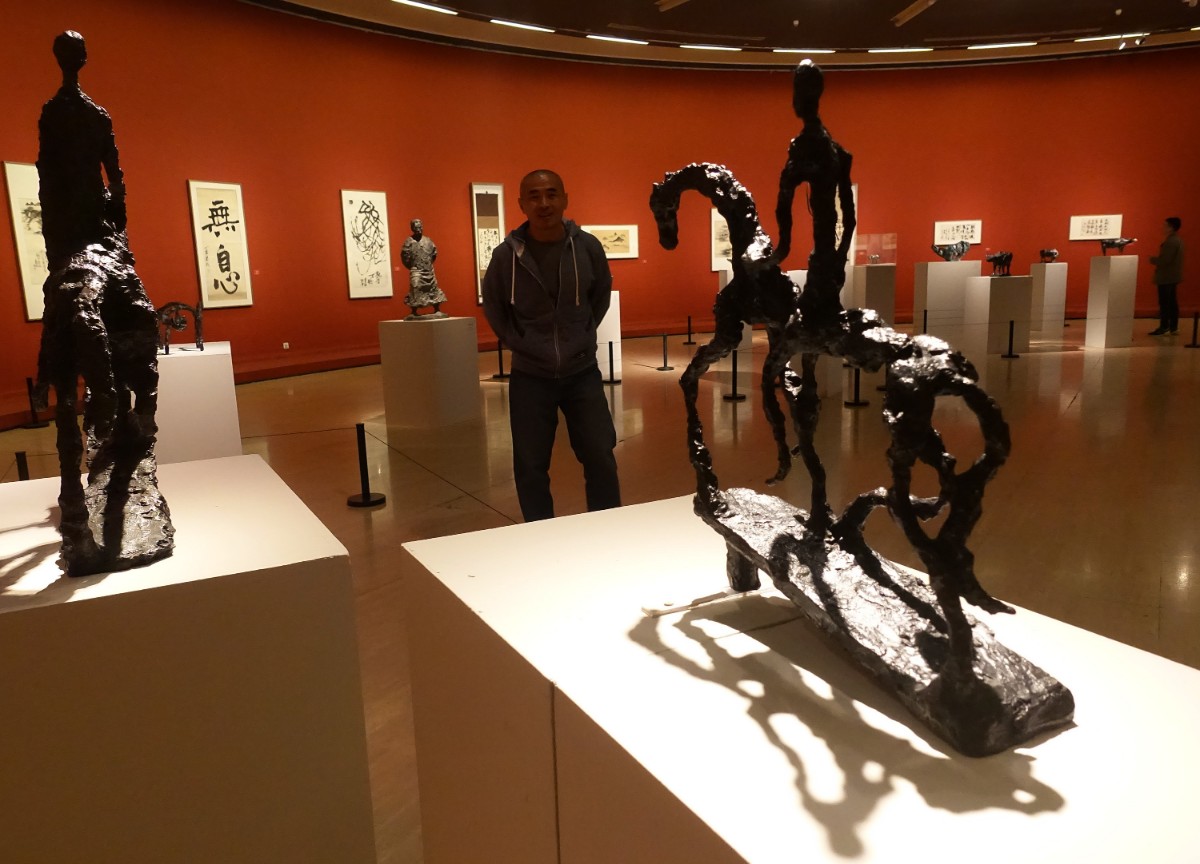
Xiong Bingming's art exhibition
The donated "Pen Holder" is particularly special, having been created specifically for Yang Zhenning by Xiong Bingming. The back of the work is engraved with their initials, "CM & CN." It is more than just a work of art; it serves as a direct testament to the friendship between these two renowned figures, transcending time and space. The pen holder, a stationery tool, symbolizes knowledge and cultural creativity, and this gift signifies their commitment to their shared cultural roots.
Camel and Horse are Xiong Bingming's most representative animal-themed sculptures. Xiong Bingming once said, "The camel and the horse, one traverses the desert, the other gallops across the grasslands. They embody a spirit of perseverance in the face of unpredictable circumstances." This spirit perfectly captures the intellectuals of Yang Zhenning and Xiong Bingming's generation—they studied amidst war, journeyed across oceans amidst turmoil, and achieved remarkable success in foreign lands, yet always cherished a deep affection for their homeland. Yang Zhenning's choice to donate these works is a return to the nation of this precious legacy, embodying personal friendship, the memory of the times, and a cultural mission. Wu Weishan, then-Director of the National Art Museum of China, commented that this is not only the best possible destination for the artworks, but also a treasured treasure of "friendship and beauty" within the nation's art arena.
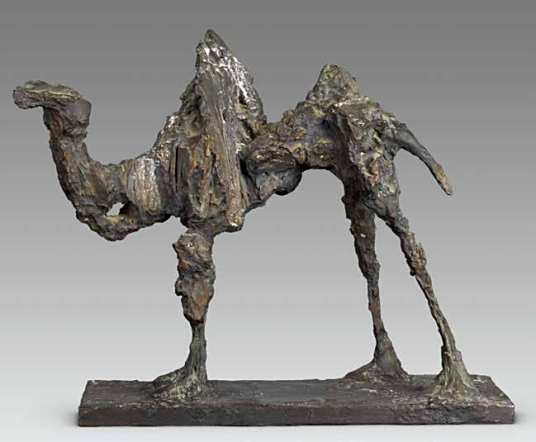
"camel"
Cultural inheritance and spiritual dialogue in calligraphy practice
Calligraphy, a core art form of traditional Chinese culture, requires both "unfettered mind and unrestrained hand," a perfect blend of cultivation and skill. Yang Zhenning's affinity with calligraphy stems from his family, interactions with masters, and his own tireless practice.
His father-in-law, Du Yuming, a renowned anti-Japanese general, was a profoundly skilled calligrapher. Through close association with the Du family, Yang Zhenning was naturally immersed in this cultural atmosphere. Du Yuming's steady, neat regular script and flowing cursive script undoubtedly had a direct influence on Yang Zhenning's calligraphy aesthetic and practice. His ability to write neat regular script, with a calm and composed air in his brushstrokes, subtly echoes the meticulous and rigorous approach to his scientific work.
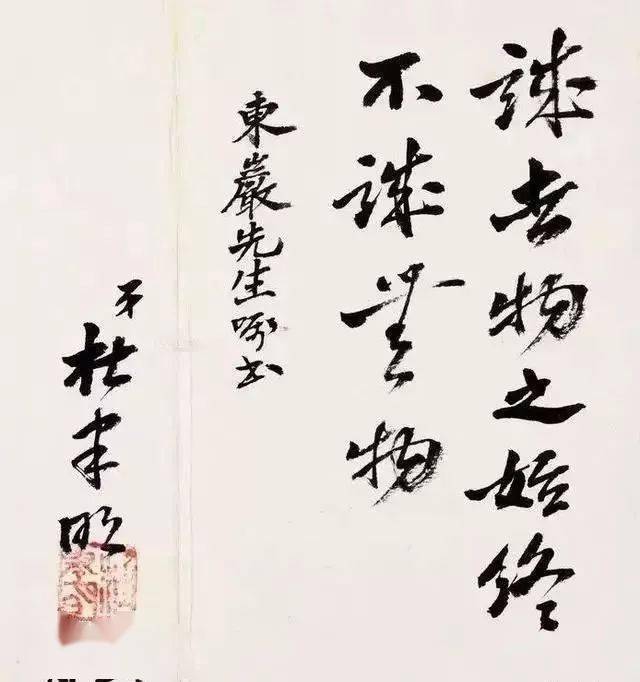
Du Yuming's calligraphy
Yang Zhenning also had contacts with the calligraphy master Mr. Qi Gong. In 2002, Yang Zhenning, the founder of the Center for Advanced Study at Tsinghua University, personally invited Mr. Qi Gong to write a plaque for the center. Mr. Qi Gong readily agreed, and the two old men, who had made great achievements in their respective fields, became friends because of their brush and ink. In 2004, Yang Zhenning went to visit Qi Gong who was ill, and the focus of their conversation was calligraphy. Yang Zhenning even mentioned at the time: "Do you know my father-in-law Du Yuming? He also likes calligraphy and writes very well!" Mr. Qi Gong said: "Of course I know him. Mr. Du has a great thing - "Wansui Tongtian Tie". I have also seen it. It is a handscroll imitating Wang Xizhi. It is the real Wang Xizhi, it is amazing!" Yang Zhenning said: "I have never seen it." Mr. Qi said: "This post is now in the collection of Liaoning Museum."
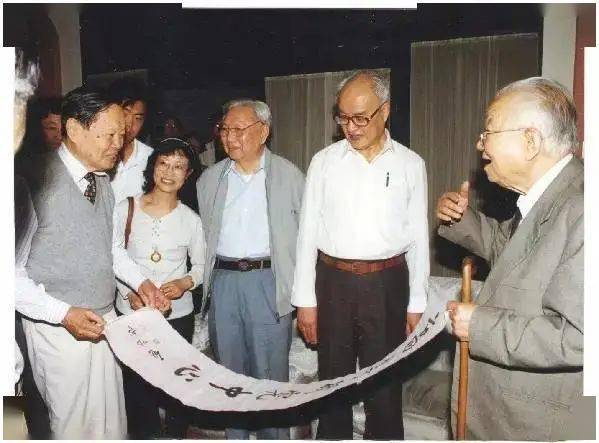
Yang Zhenning and calligraphy master Qi Gong
Yang Zhenning has displayed his calligraphy in public. At his 102nd birthday celebration, he and Weng Fan signed their names, and their friend Wang Zheng, who was standing nearby, captured the moment. His calligraphy, titled "Pupils and Plums Across the World, Learning Originates from Thinking," has appeared at auction. For him, writing is perhaps more than just artistic creation; it is also a form of inner cultivation, a way to connect with the sages of the past, and a way to affirm and pass on his cultural identity.
